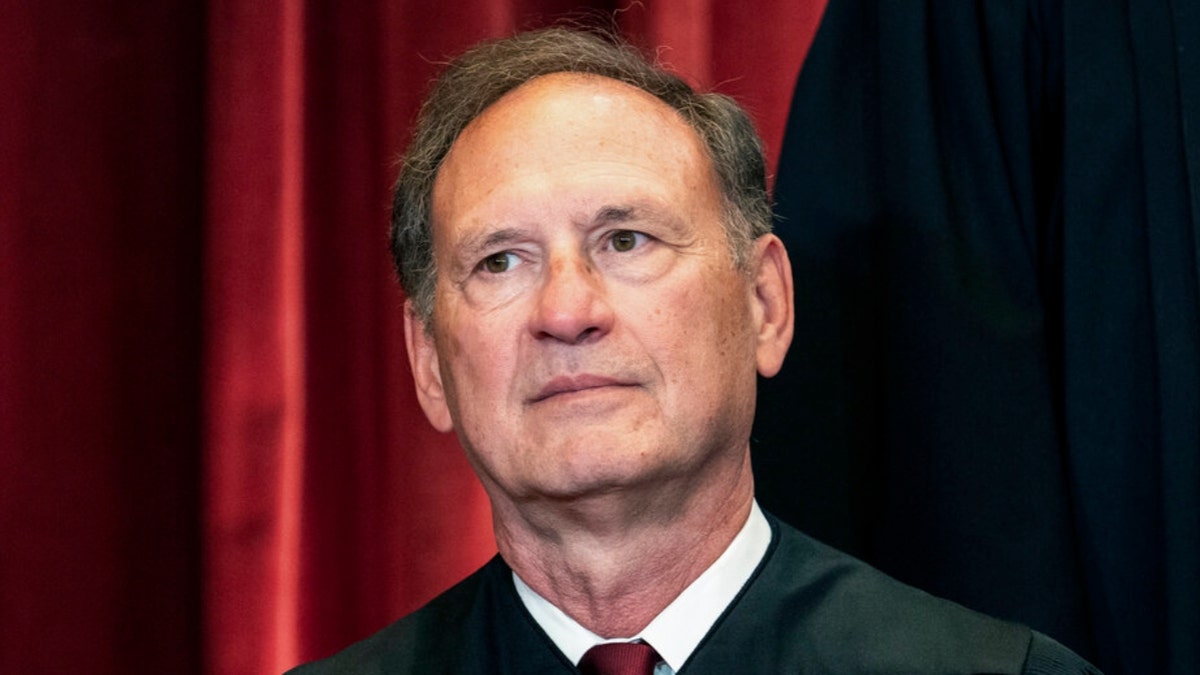Roe v. Wade is gone. Finally. The Supreme Court met the moment and made history, correcting the most egregious judicial distortion of the Constitution in living memory.
The leak of Justice Samuel Alito’s draft opinion in Dobbs v. Jackson Women’s Health Organization overturning Roe was a shameful attempt to poison the well so that it would never see the light of day, at least not as the court’s majority opinion.
The seven-plus weeks that followed brought not only brazen intimidation tactics, but also the attempted murder of a justice and violence that extended to crisis pregnancy centers and churches.
RIP ROE: SUPREME COURT ABORTION RULING SETS STAGE FOR WHAT PRO-LIFE GROUPS DO NEXT
Those threats and violence failed. The court’s majority held, and those justices should be recognized for their courage to withstand the intense pressure targeting them on so many levels. Alito’s opinion does not significantly differ from the earlier draft other than to address other justices’ concurring and dissenting opinions.

Crowds outside the Supreme Court reacting to the Dobbs ruling. (Joshua Comins/Fox News)
The majority does not play coy about overruling erroneous precedents, as the court has sometimes been known to do. It states unequivocally that Roe and Casey v. Planned Parenthood, the 1992 decision that reaffirmed the abortion right established in 1973 by Roe, "must be overruled. The Constitution makes no reference to abortion, and no such right is implicitly protected by any constitutional provision."
Alito’s opinion goes so far as to call Roe "egregiously wrong from the start," with "exceptionally weak" reasoning and "damaging consequences."
SUPREME COURT DECISION RESTORES CONSTITUTIONAL PRINCIPLES
Dobbs involves a challenge to Mississippi’s statute prohibiting abortions at 15 weeks, with exceptions for medical emergencies and severe fetal abnormality. Mississippi’s 15-week limit is far earlier than the standard established in Casey, which limited the restriction of abortion to after "viability." While the viability line has shifted with advances in technology, it is still nowhere near 15 weeks.
The court did not address when states should start protecting prenatal life, leaving this to legislatures to determine, but it acknowledged what both Roe and the decisions that followed it whitewashed: "Abortion destroys what those decisions call ‘potential life’ and what the law at issue in this case regards as the life of an ‘unborn human being.’"
Alito’s opinion notes 30 significant precedents have been overturned over the course of our history.
Alito’s opinion notes 30 significant precedents have been overturned over the course of our history. Among the most famous examples, Brown v. Board of Education (1954) overruled the "separate but equal" doctrine of Plessy v. Ferguson (1896), a decision that had stood for 58 years – considerably longer than Roe.
And although Casey itself is not often thought of as an overruling case, it actually overruled Roe in part by substituting the purported reasoning justifying abortion as a federal constitutional right and creating a new legal test know as the"undue burden" standard.
For the 30 years since Casey was decided, the undue burden standard has prevented legislatures from enacting laws that are deemed too burdensome on the right to an abortion. This nebulous standard has left a long trail of confused judges reaching conflicting conclusions regarding abortion regulations not only on lower courts, but on the Supreme Court itself.

Justice Samuel Alito joins his colleagues for the Supreme Court's group portrait in Washington, April 23, 2021. (Erin Schaff/The New York Times via AP, Pool, File)
And while Casey, invoking the court’s "legitimacy," called upon the country to "end their national division" over the abortion issue by accepting its watered-down version of judicial imperialism, Alito observes, "As has become increasingly apparent in the intervening years, Casey did not achieve that goal."
CLICK HERE TO GET THE OPINION NEWSLETTER
Justices Stephen Breyer, Sonia Sotomayor and Elena Kagan wrote a joint dissent that, like the precedents they argued should be upheld, reads like a raw appeal for legislation. This includes the hyperbolic claim that now "a woman has no rights to speak of" from the moment of fertilization on, as if the only right that matters were a judicially imposed ability to abort.

Supreme Court Justice Stephen Breyer holds up a copy of the U.S. Constitution as he announces he will retire at the end of the court's current term, at the White House, Jan. 27, 2022. (Reuters/Kevin Lamarque)
For that matter, the dissenters do not make a serious effort to dispute the points the majority makes about the legal basis for Roe in the first instance. Their argument amounts to an appeal to uphold the court’s protracted acts of judicial fiat on the subject of abortion because they like the outcome of those precedents as a matter of policy. Such brazen melding of policy preferences with constitutional interpretation undermines the rule of law.
CLICK HERE TO GET THE FOX NEWS APP
Thanks to the court’s Dobbs decision, we can now say goodbye to Roe’s false history, to Casey’s pompous preening about the court’s "legitimacy" instead of admitting a mistake, and to both cases pretending that the unborn have no rights that the people are allowed to protect.
Now the people, through their elected representatives, are free to legislate as they will on this contested topic. Finally, an issue that the court had taken away from the people has now been returned to them.

